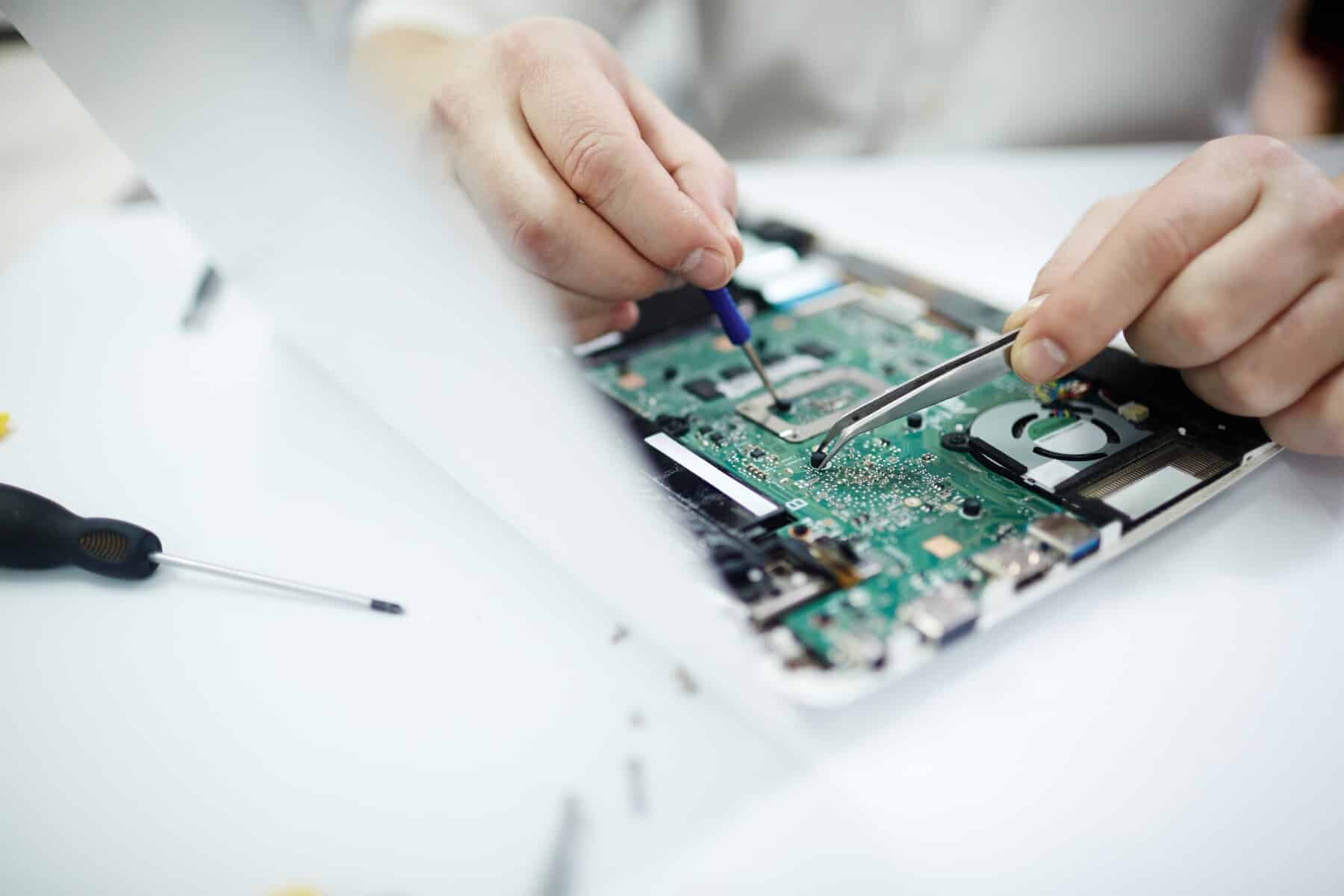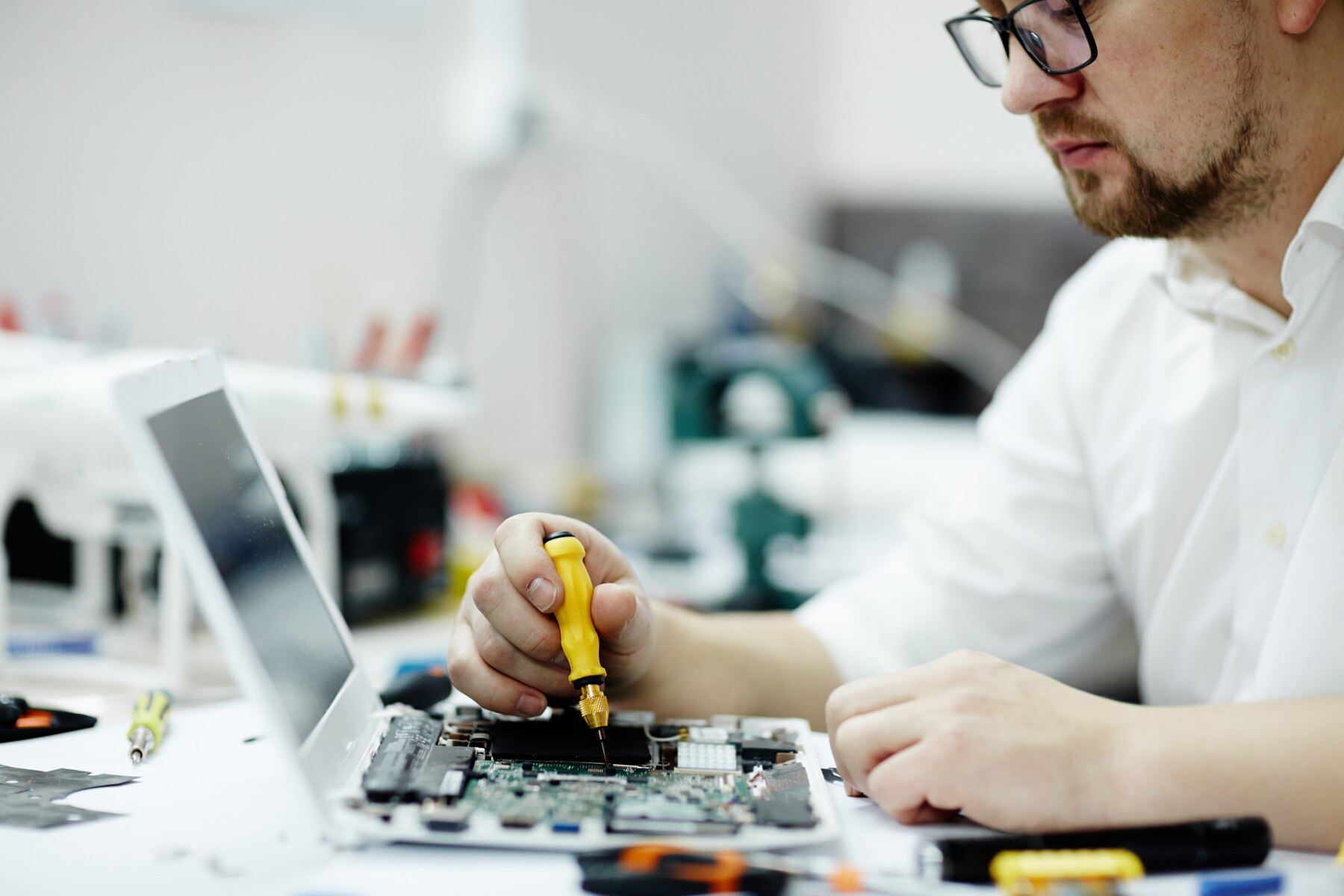
Common Laptop Problems and How to Fix Them
Laptops have become essential tools for work, school, and entertainment, but they’re not immune to issues. Whether your laptop is running slowly, overheating, or refusing to turn on, knowing how to fix laptop issues can save you time, money, and frustration. In this guide, we’ll cover the most common problems and offer practical solutions to troubleshoot computer problems effectively. Plus, we’ll share the best laptop maintenance tips to help prevent these issues from cropping up in the first place.

Slow Performance
A sluggish laptop can be incredibly frustrating, but there are several fixes to help speed things up:
- Check Startup Programs: Too many programs launching at startup can slow your system down. Disable unnecessary apps by accessing Task Manager (Ctrl + Shift + Esc) and navigating to the “Startup” tab.
- Free Up Disk Space: Run Disk Cleanup or uninstall unused applications to free up space. A nearly full hard drive can significantly slow performance.
- Upgrade Your RAM or Switch to an SSD: If your laptop has limited memory or uses a traditional hard drive, upgrading to a solid-state drive (SSD) or adding more RAM can dramatically improve speed.
- Scan for Malware: Viruses and malware can consume system resources, slowing down performance. Run a full system scan with reliable antivirus software.
Overheating
Overheating is a common problem that can lead to performance issues and even hardware damage if not addressed.
- Clean the Vents and Fans: Dust buildup can block airflow, causing overheating. Use compressed air to carefully clean the vents.
- Use a Cooling Pad: A cooling pad can help lower temperatures, especially during heavy usage.
- Check Background Processes: High CPU usage from background apps can increase heat production. Open Task Manager and close unnecessary processes.
- Update BIOS: Sometimes updating your laptop’s BIOS can improve thermal management. Check your manufacturer’s website for instructions.
Battery Not Charging
If your laptop isn’t charging properly, these fixes may help:
- Check the Power Adapter and Cable: Ensure the adapter is plugged in securely and inspect the cable for damage.
- Reset the Battery Driver: In Device Manager, find “Batteries,” right-click on “Microsoft ACPI-Compliant Control Method Battery,” and select “Uninstall device.” Then restart your laptop to reinstall the driver.
- Replace the Battery: If your laptop is a few years old and the battery drains quickly, consider replacing it.
- Calibrate the Battery: Occasionally, your battery’s calibration can be off. Fully charge, then fully drain the battery, and recharge it again to reset the calibration.
WiFi Connection Issues
Having trouble connecting to the internet? Try these troubleshooting tips:
- Toggle Airplane Mode: Turn Airplane Mode on and off to reset the connection.
- Forget and Reconnect to Your Network: In your WiFi settings, forget the network, then reconnect with your password.
- Update Network Drivers: Go to Device Manager, find your network adapter, and update the driver software.
- Restart Your Router: Sometimes the issue lies with your internet connection, not your laptop. Restart your router and modem.
Laptop Won’t Turn On
If your laptop won’t power up, don’t panic — try these steps:
- Check the Power Source: Ensure the charger is connected and the outlet is working.
- Perform a Hard Reset: Disconnect the charger, remove the battery (if possible), then hold the power button for 30 seconds. Reconnect the power and try turning it on.
- Look for Signs of Life: If you hear fans spinning or see indicator lights, the issue may be with the screen or other components.
- Test with an External Monitor: Connect your laptop to an external monitor to see if the display is the problem.

Blue Screen of Death (BSOD)
The dreaded blue screen can indicate hardware failure or software conflicts. Here’s what to do:
- Note the Error Code: The error message displayed can provide clues about the cause.
- Update Drivers and Windows: Outdated drivers often cause BSODs. Ensure all drivers and Windows updates are current.
- Run a System Scan: Use “sfc /scannow” in Command Prompt to scan and repair corrupted system files.
- Check Hardware: Faulty RAM or a failing hard drive can also trigger BSODs. Consider running a hardware diagnostic test.
Unresponsive Keyboard or Touchpad
If your keyboard or touchpad stops working, try these fixes:
- Restart Your Laptop: A simple reboot can resolve many input issues.
- Check for Driver Updates: In Device Manager, update the keyboard and touchpad drivers.
- External Keyboard Test: Connect an external keyboard to see if the problem lies with the hardware.
- Disable Filter Keys: On Windows, Filter Keys can cause the keyboard to seem unresponsive. Turn this off in the Accessibility settings.
Best Laptop Maintenance Tips
Prevent future problems with these laptop maintenance best practices:
- Keep It Clean: Regularly clean your keyboard, screen, and vents to prevent dust buildup.
- Update Regularly: Keep your operating system, drivers, and software updated to patch security vulnerabilities and improve performance.
- Use Antivirus Software: Protect your laptop from malware that could slow it down or compromise your data.
- Backup Your Data: Regular backups ensure that your files are safe, even if something goes wrong.
- Handle with Care: Avoid dropping or knocking your laptop, and always transport it in a padded case.
- Avoid Overcharging: Don’t leave your laptop plugged in constantly; it can degrade battery life over time.
- Manage Storage: Regularly delete unused files and uninstall programs you no longer need to keep your system running smoothly.

Final Thoughts: Keep Your Laptop Running Smoothly
Learning how to fix laptop issues and troubleshoot computer problems can save you time and money while extending the lifespan of your device. From improving performance to solving charging issues, these simple fixes can make a world of difference. Don’t forget to implement the best laptop maintenance tips to keep your machine running smoothly for years to come.
What laptop problems have you encountered? Share your troubleshooting experiences in the comments below and help fellow readers keep their devices in top shape!
